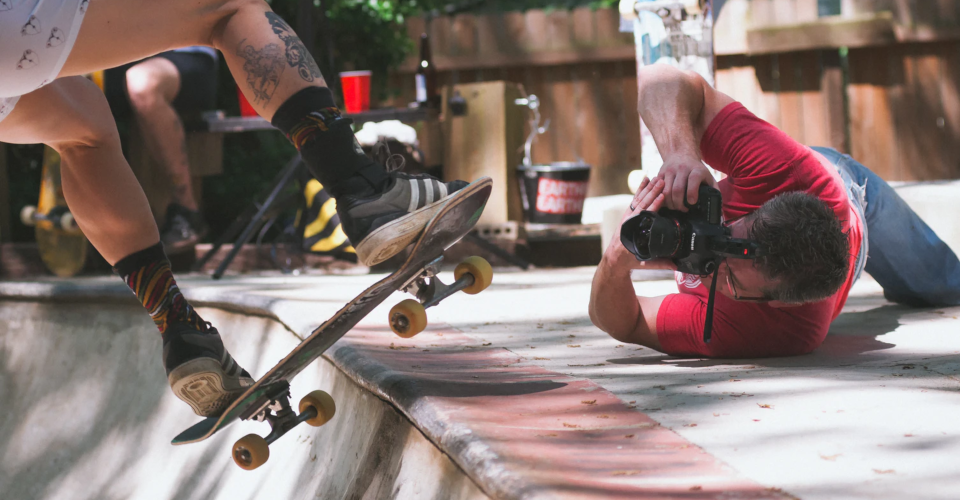6 Best Cameras for Action Shots in 2020
It takes skill, a little luck, and a capable camera to land the perfect action shot. Once all three come together, though, the results are nothing short of spectacular. Action photography immortalizes moments of intense excitement and suspense. It lets us relive the thrill of a headlong plunge into a lake or analyze every nuance of a game-changing three-pointer.
Not all cameras are a good fit for action photography. Suitable candidates need to keep up with their subjects, so fast and accurate autofocus is a top priority. Our reflexes aren’t fast enough to snap every action shot perfectly, so a high burst speed helps produce more usable images. Most action happens out in the open, so the camera’s viewfinder and LCD need to be bright enough.
Below you’ll find the six best cameras for action shots. We’ve selected different types of cameras at varying price points so newcomers and professionals alike can find a model worth their time. Check out why these cameras perform so well and never miss a once-in-a-lifetime shot again.
| Budget |
|---|
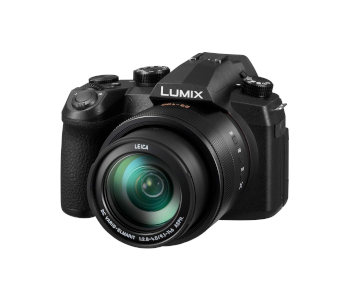 |
| PANASONIC LUMIX FZ1000 II |
| 4.2/5.0 |
| Type: Bridge |
| Sensor: 1-inch |
| Snappy autofocus and 30fps 4K burst mode. |
| Check Amazon |
| Best Value |
|---|
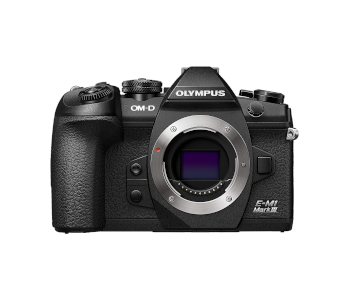 |
| Olympus OM-D E-M1 Mark III |
| 4.6/5.0 |
| Type: Mirrorless |
| Sensor: 4/3 |
| Accurate autofocus with customizable zones. |
| Check Amazon |
| Top Pick |
|---|
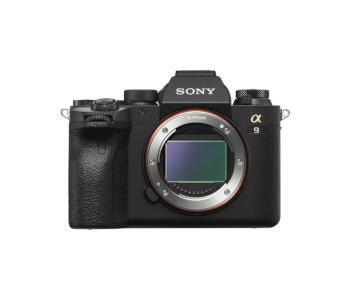 |
| Sony Alpha a9 II |
| 4.9/5.0 |
| Type: Mirrorless |
| Sensor: 35mm |
| Fantastic burst speed without blackouts. |
| Check B&H |
Cameras for Action Shots Comparison Table
| Image | Product | Overall Rating | Image quality | Autofocus | Burst speed | Price |
|---|---|---|---|---|---|---|
 | Sony Alpha a9 II | 4.9 | 4.9 | 5.0 | 4.8 | Check Price |
 | Olympus OM-D E-M1 Mark III | 4.6 | 4.6 | 4.7 | 4.7 | Check Price |
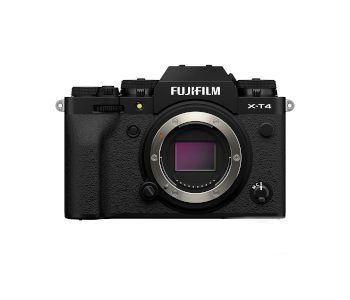 | Fujifilm X-T4 | 4.7 | 4.7 | 4.6 | 4.6 | Check Price |
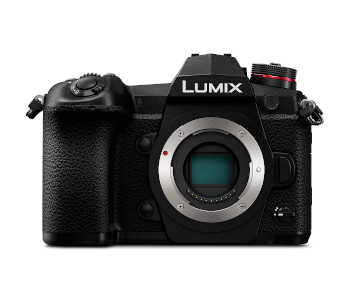 | PANASONIC LUMIX G9 | 4.5 | 4.6 | 4.4 | 4.6 | Check Price |
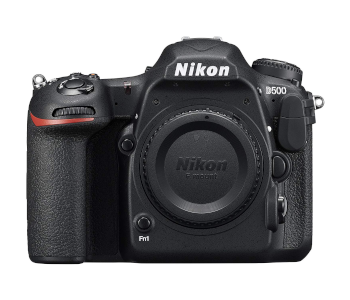 | Nikon D500 | 4.4 | 4.4 | 4.5 | 4.2 | Check Price |
 | PANASONIC LUMIX FZ1000 II | 4.2 | 4.2 | 4.3 | 4.1 | Check Price |
1. Best Overall – Sony Alpha a9 II
Editor’s Rating: 4.9/5
The second iteration of Sony’s Alpha a9 mirrorless is the best camera for action shots in the world, better even than the competition’s pricier and larger DSLRs. It has an electronic shutter that delivers blackout-free performance at a blazing-fast 20fps burst in both JPEG and RAW modes. The autofocus is the best and most comprehensive out there, and the camera is even a capable video shooter when the need arises. You’ll have to part with a lot of money to get it, but it’s a small price to pay to capture any split-second moment imaginable in perfect clarity.
The original Sony Alpha a9 remains a strong contender as well. It’s cheaper and has most of its successor’s features, save for a slower mechanical shutter, slower RAW burst rates, and a different viewfinder.
Overview of Features
The a9 II is a premium-quality mirrorless camera, which is reflected in its tough magnesium alloy body and superb ergonomics. The camera is weather-sealed and protected from dust, so you’re free to stay close to the action for detailed shots. You can make the a9 II your own as four dedicated buttons, and each direction of its eight-way focus joystick can be set to a custom function. Mode, drive, and command dials on the a9 II’s top make adjusting exposure rates and focus behavior easy.
Framing a shot is intuitive and easy thanks to the a9 II’s powerful LCD & electronic viewfinder combo. The screen is tiltable and responds instantly to touch inputs. It has several brightness levels to choose from and is clearly visible in sunlight. The EVF is among the best out there. It has a resolution of 3.68 million dots and a magnification of 0.76x.
We can’t overstate how accurate and effective the autofocus is. Subjects are tack-sharp and in focus as soon as you’re looking through the EVF. Autofocus covers the entire frame area except for its outermost edges. You can use single focus points or define focus zones of varying sizes, and the a9 II will hone in on what’s inside and keep the subject in focus from then on regardless of its shifting position in the frame. Face and eye detection work like a charm, and the latter applies to pets and other animals too.
Burst speed is another of the a9 II’s impressive stats. You can shoot bursts of 20 images per second in JPEG and RAW alike. The a9 II uses an electronic shutter that provides a continuous real-time view of the action while the burst is happening, so there are no freeze frames, and you always know exactly what’s going on. The image buffer is generous and can hold more than 350 JPEGs or 200 RAW photos. 690 of them can be shot before the battery needs recharging.
Photo storage and sharing are handled exceptionally well. On the one hand, the a9 II has two memory card slots that support the fastest UHS-II standard. On the other, Sony’s companion apps let you transfer photos to your phone through Bluetooth and Wi-Fi or upload them to an FTP server complete with voice memos.
Even though it’s aimed at the action photographer, the a9 II is a competent video camera. It records crisp 4K clips at 30fps and can do slow-motion in 1080p at 120fps. There’s digital as well as XLR microphone input, a headphone jack, and an HDMI port to put out 8-bit video to external recorders.
What We Didn’t Like
Talking about the a9 II’s faults is nitpicking, provided you can afford one. Sony is hesitant to embrace touch-operated menus, so the only thing the screen is good for is setting the focus point. Even buffers this large will fill up, and it takes between one and three minutes to clear them. You can snap photos during that time, but you can’t switch to video.
| Tech Specs |
|---|
| Dimensions: 5.1 x 3.8 x 3.1 in. |
| Weight: 23.9 oz. |
| Type: Mirrorless |
| Sensor: 35mm |
| Burst rate: 20fps |
| Battery: 690 shots |
| ISO range: 100 – 51,200 |
| Max still resolution: 24.2 MP |
| Max video resolution: 4K, 30fps |
| The Pros |
|---|
| World-class autofocus performance |
| Fantastic burst speed without blackouts |
| Large image buffer |
| Detailed and bright viewfinder |
| The Cons |
|---|
| Expensive |
| Touchscreen doesn’t support menu navigation |
2. Best Value – Olympus OM-D E-M1 Mark III
Editor’s Rating: 4.6/5
Olympus’s newest Micro Four Thirds camera is the most versatile on review. It has seven stops of native image stabilization, can achieve ridiculous burst speeds with its focus locked, and has an innovative autofocus that keeps better track of people. Its advanced processor can simulate several ND filters and produce incredibly detailed 80MP stills thanks to Pixel Shift. Best of all, the OM-D E-M1 Mark III goes toe to toe with cameras more than twice as expensive.
Overview of Features
The first thing you’ll appreciate about the OM-D E-M1 Mark III is its portability. However, the camera’s body is weather-sealed, and you can take pictures in extreme temperatures. A deep grip makes the camera easy to hold while a wealth of physical commands lets you adjust everything from drive mode to exposure and focus without touching the screen. The layout is similar to its predecessor’s with a dedicated ISO button making a welcome appearance.
The OM-D E-M1 Mark III’s viewfinder isn’t as sharp as the a9 II’s, but it offers 0.74x magnification and works well when you’re shooting into the light. The LCD is a 3-inch vari-angle touchscreen you can flip out and position at an angle for difficult shots or turn inwards to protect it from harm. Olympus has outfitted it with a dense menu system you can navigate only via joystick. However, there’s also the Super Control Panel, a special touch-sensitive menu containing most common settings you can change instantly.
World-class image stabilization is the most impressive thing about the OM-D E-M1 Mark III. It natively corrects for seven stops of shake, half a stop more if you buy one of the new lenses released alongside the camera. That lets you snap razor-sharp pics without using tripods or gimbals. It also means you can capture indoor sports without needing to crank the ISO up and lose details.
You’ll never miss the ideal photo opportunity with an OM-D E-M1 Mark III since it can snap 60-image bursts. It’s possible to set the camera up to take a handful of images as you half-press the shutter and more once it’s pressed completely. That way, you won’t miss out if you’re half a second too late on the draw.
We were also impressed with the OM-D E-M1 Mark III’s autofocus. It’s accurate and speedy on its own, easily identifying erratically-moving humans and not letting them get blurry. You can take advantage of an innovative way of grouping focus. The OM-D E-M1 Mark III enables you to define custom focus shapes that don’t need to be square-shaped. For example, you can designate a vertical line as the focus area and keep up with players more reliably.
What’s Bad About It?
The OM-D E-M1 Mark III has two memory card slots, but only one of them supports UHS-II. Disappointing for a camera in this price bracket that’s only several months old. Olympus used the same small 20.1MP image sensor as in the Mark II. You’ll need ample light or long exposures since setting ISO past 3,200 introduces significant noise.
| Tech Specs |
|---|
| Dimensions: 5.3 x 3.6 x 2.7 in. |
| Weight: 20.5 oz. |
| Type: Mirrorless |
| Sensor: 4/3 |
| Burst rate: 60fps for JPEG, 18fps for RAW |
| Battery: 420 shots |
| ISO range: 200 – 25,600 |
| Max still resolution: 20.4 MP |
| Max video resolution: 4096×2160, 24fps |
| The Pros |
|---|
| Excellent value for the money |
| Fantastic image stabilization |
| Accurate autofocus with customizable zones |
| Small yet weatherproof and durable |
| The Cons |
|---|
| UHS-II support for only one memory card |
| Images shot at high ISO show noise |
3. Fujifilm X-T4
Editor’s Rating: 4.7/5
Fujifilm’s X.T4 is the newest camera on review. It’s equally adept at shooting action and recording video thanks to new image stabilization. Image quality is excellent since its white balance is natural, and details are preserved well if you turn on HDR. Add 20fps burst shooting, and you’ve got a capable camera for any unpredictable scenario.
Overview of Features
The X-T4 looks similar to its predecessor, a deeper grip, and subtle rearrangements to the controls being its most significant differences. Adequate spacing lets people with large hands handle the X-T4 without feeling cramped. Most buttons can be customized, and there’s a switch that toggles between photo & movie mode, each with their distinct settings.
The X-T3’s screen could only tilt up or down. Now the LCD articulates fully and flips towards the camera when it isn’t in use. Fujifilm’s menus are dense but organized into small subsections that open up to reveal a wealth of options. You can cut down on the clutter even more by customizing the My and Q menus. The EVF is a 3.69-million-dot OLED panel with vivid colors and no tearing, perfect for keeping fast-moving subjects in the frame.
The X-T4 works well in low light, especially if you’re shooting RAW. You can use five-digit ISO values and still get images with few noise issues. JPEGs are punchy and can take less processing before becoming too grainy, but you shouldn’t have any problems if you stick to ISO 3,200 or lower. Like the a9 II, the X-T4 has an electronic shutter with a 20fps burst speed. Switching to manual decreases the rate to 15fps and is useful when you’re snapping pics at sports arenas and want to eliminate strobing.
Autofocus on the X-T4 is generally good but also situation-specific. It’s excellent at identifying and distinguishing between faces. You can jump from one face to another seamlessly, and a face that’s been obscured will promptly be in focus again. AF performance is best when subjects are moving predictably as abrupt changes in direction and speed will lead to more duds during burst shooting.
Are There Drawbacks?
The X-T4 has a limited RAW buffer. You’ll get less than three seconds of continuous shooting before it fills up, so time your shots wisely. Eye detection is prone to false positives. It’s best to keep it off if you’re in an environment where this could become problematic.
| Tech Specs |
|---|
| Dimensions: 5.3 x 3.7 x 2.5 in. |
| Weight: 21.4 oz. |
| Type: Mirrorless |
| Sensor: APS-C |
| Burst rate: 20fps |
| Battery capacity: 600 shots |
| ISO range: 160 – 12,800 |
| Max still resolution: 26.1 MP |
| Max video resolution: 4K, 60fps |
| The Pros |
|---|
| Excellent image quality and detail retention |
| Customizable controls and menus |
| Autofocus distinguishes between multiple people quickly |
| Fast burst shooting |
| The Cons |
|---|
| Small buffer for RAW files |
| Unreliable eye AF |
4. PANASONIC LUMIX G9
Editor’s Rating: 4.5/5
Panasonic and Olympus have co-created the MFT system, so it’s no surprise that the more accessible G9 shares many features with our value pick. It can shoot at 20fps in continuous mode and 60 if you lock focus. Image stabilization compensates for an impressive 6.5 stops, and there are plenty of autofocus modes to capture clean images in a variety of dynamic situations.
Overview of Features
The G9 is another solidly-built mirrorless camera with a magnesium alloy body and tight weather sealing. It has a recessed grip and pronounced thumb rest that make it easy to operate one-handed. A status LCD occupies the right side of the top plate and is an unusual yet welcome addition for cameras in this price range. Physical controls are sparse, but the G9 does have an AF joystick and several dials, one of which doubles as the D-pad.
We were pleasantly surprised by the G9’s EVF. It’s a bright OLED panel with a great refresh rate that delivers smooth live footage even while panning. It has 0.84x magnification, letting you pick out more detail than viewfinders found on competing cameras. The LCD isn’t a slouch either; it’s sensitive to touch and articulates to accommodate difficult shooting positions.
The G9’s image quality is commendable, given its small sensor. The camera excels at determining proper exposure and helps keep photos from looking washed out or suffering from too much contrast. There’s no optical low-pass filter, so pictures won’t be artificially softened. The white balance reproduces colors naturally in tungsten or LED lighting, while JPEGs have a rich color profile.
The G9 delivers in-focus images at 20fps. You can crank the speed up to a jaw-dropping 60fps for both RAW and JPEG if you don’t mind locking focus to the first frame. Panasonic uses the Depth from Defocus technology to great effect. It doesn’t lag behind hybrid systems even though it only relies on contrast detection. You may choose between several focus modes that take advantage from one to all 225 of the G9’s AF points.
This is a fantastic camera to get if you’re a novice action photographer or don’t want to fiddle too much with the focus. It intelligently determines what part of the frame you want to focus on and is right most of the time. You can adjust focus manually with the joystick on rare occasions when it isn’t. More hands-on photographers can always switch to single-point detection, tracking, or area selection. Face and eye tracking are present and work as expected.
What’s Bad About It?
The AF joystick isn’t responsive enough. It switches between points slowly and can’t move diagonally, which might cost you precious seconds. You can use the touchscreen to select focus points while looking through the viewfinder. There’s no option to lock the screen, so you might inadvertently shift the focus with your nose.
| Tech Specs |
|---|
| Dimensions: 5.4 x 3.8 x 3.6 in. |
| Weight: 23.2 oz. |
| Type: Mirrorless |
| Sensor: 4/3 |
| Burst rate: 60fps |
| Battery capacity: 400 shots |
| ISO range: 200 – 25,600 |
| Max still resolution: 20.2 MP |
| Max video resolution: 4K, 60fps |
| The Pros |
|---|
| Excellent locked and continuous burst speeds |
| Dependable autofocus with lots of user input |
| Excellent overall image quality |
| Easy to operate one-handed |
| The Cons |
|---|
| Touch sensitivity can’t be turned off |
| Slow AF joystick |
5. Nikon D500
Editor’s Rating: 4.4/5
Nikon’s D500 is proof that APS-C DSLRs are still relevant in the world of action photography. It’s an excellent performer with superb autofocus, a host of configurable controls, and a mammoth-sized battery. Nikon’s wide range of compatible lenses gives you plenty of options, while the camera’s ISO performance ensures nighttime or indoor action turns out as well as can be.
Overview of Features
The D500 is light for a DSLR yet big enough to house an impressive number of controls. It’s textured with faux leather and easy to handle thanks to a recessed grip. You’ll find buttons seemingly everywhere, even on the LCD’s left side. Most of them can be configured to either access custom commands or work in one of several modes. The top left dial, left-side buttons, and the small LCD all light up for easier handling in low light.
You can tilt the LCD to shoot over crowds or from the hip. Its touch sensitivity lets you select focus points or menu items. Nikon’s menus are logically laid out and hold many minute adjustment options you’ll love to tinker with in search of perfection. The OVF is one of the best you’ll see on an APS-C camera. You can’t select AF points during the finder’s use since it’s optical, but you get 1x magnification and bright output that gives an accurate depiction of the frame.
The D500’s autofocus is versatile and handles moving subjects with ease. There are 153 points across the live preview. 99 of them are cross-type, while you can select 54 manually. The abundance of cross-type AF points ensures excellent accuracy even in dim conditions. You may also choose between different types of AF coverage. These include a single point, a point with an adjustable radius, full auto mode, and 3D tracking.
Using 3D tracking lets you specify a point around which the D500 will follow subjects. You may also turn face detection on or off during 3D tracking to distinguish between people and inanimate objects better. Best of all, you may bind each AF type to a button and switch between them at will.
The D500 maintains impressive AF performance and image quality even if pushed to its max 10.2fps in burst mode. It has a large buffer, allowing you to keep shooting RAW images as long as needed. The battery is a beast as well and has a capacity of more than 1,200 shots. High dynamic range lets you bring back details during post while low-light performance and color balance are strong.
What We Didn’t Like
The D500 doesn’t have the best control layout. Some buttons are easy to press accidentally, while others’ placement makes the camera a poor fit for single-handed use. Turning live view on decreases the number of shots per charge considerably. You can’t use live view or transfer photos through Wi-Fi if the battery is low.
| Tech Specs |
|---|
| Dimensions: 5.8 x 4.5 x 3.2in. |
| Weight: 30.2 oz. |
| Type: DSLR |
| Sensor: APS-C |
| Burst rate: 10.2fps |
| Battery capacity: 1,240 shots |
| ISO range: 100 – 51,200 |
| Max still resolution: 20.9 MP |
| Max video resolution: 4K, 60fps |
| The Pros |
|---|
| Superb autofocus with several adjustable modes |
| Lots of physical controls for nuanced configuration |
| Sturdy and easy to grip |
| Bright viewfinder with 1x magnification |
| The Cons |
|---|
| Awkward control layout |
| Can’t transfer photos or use live view when battery is low |
6. Best Budget Option – PANASONIC LUMIX FZ1000 II
Editor’s Rating: 4.2/5
Our budget pick is the FZ1000 II, a bridge camera from Panasonic that offers above-average image quality and decent burst shooting at an enticing price. Bridge cameras have fixed lenses, and the FZ1000 II’s covers a focal length of 25-400mm in full-frame terms. Couple that with speedy autofocus, and you’ve got a versatile camera both casual photographers and pros will appreciate.
Overview of Features
The FZ1000 II looks like a compact DSLR, but the fixed lens betrays its bridge identity. It’s built mostly from plastic, with a metal barrel surrounding the lens glass. This is one of the most customizable cameras on review, as eight of its buttons can be set to a command of your choosing. You also get to play with three dials and have a D-pad whose direction keys control ISO and white balance along with ordinary and macro focusing modes.
Panasonic has outfitted the FZ1000 II with the best electronic viewfinder in its class. It offers 0.74x magnification and brings a bright view of the frame thanks to OLED technology and a high refresh rate. The LCD is a vari-angle mode and easy to rotate to get the perfect angle. An eye sensor detects when you’re using the EVF and turns the LCD off to save power. The position of the eyecup makes using the viewfinder more accommodating for photographers who wear glasses.
The FZ1000 II is capable of 12-photo bursts in either RAW or JPEG. This value drops to 6.4 if you wish to reacquire focus individually. You can also sacrifice resolution for speed and ramp the burst rate up to 300fps at 4K or 8.3 megapixels. The battery lasts for 400 shots in live view, less if you’re using the viewfinder. You can charge it in-camera, though, and top it up from a powerbank between sessions.
Autofocus is the same Depth from Defocus type we’ve seen with the G9. Its varied modes are identical, too, giving you a range of options to use. Face and eye detection work well for moving people whole Tracking mode helps keep racecars and other non-living objects sharp.
The fixed lens is a decent performer. Its broad focal range lets you snap landscapes only to quickly take a close-up shot of a cheetah about to pounce on its lunch. There’s a framing assist button that zooms out slightly so you can put subjects in the center of the frame and then resets the zoom after you depress it. The lens is augmented by image stabilization. It’s not as effective as the G9’s, but you can expect a significant reduction in camera shake.
Are There Drawbacks?
The FZ1000 II is another camera with a small RAW buffer and can only snap 30 of them. Cleaning the buffer doesn’t take long, but that’s not saying much when every second counts. You should avoid using the FZ1000 II in harsh conditions since it lacks any kind of sealing.
| Tech Specs |
|---|
| Dimensions: 5.4 x 3.8 x 5.2 in. |
| Weight: 28.5 oz. |
| Type: Bridge |
| Sensor: 1-inch |
| Burst rate: 12fps |
| Battery capacity: 440 shots |
| ISO range: 125 – 12,800 |
| Max still resolution: 20.1 MP |
| Max video resolution: 4K, 30fps |
| The Pros |
|---|
| Versatile camera at a very low price |
| Snappy autofocus |
| 30fps 4K burst mode |
| Excellent control customization |
| The Cons |
|---|
| No weather sealing |
| Small RAW buffer |
Contents
- Cameras for Action Shots Comparison Table
- 1. Best Overall – Sony Alpha a9 II
- Overview of Features
- What We Didn’t Like
- 2. Best Value – Olympus OM-D E-M1 Mark III
- Overview of Features
- What’s Bad About It?
- 3. Fujifilm X-T4
- Overview of Features
- Are There Drawbacks?
- 4. PANASONIC LUMIX G9
- Overview of Features
- What’s Bad About It?
- 5. Nikon D500
- Overview of Features
- What We Didn’t Like
- 6. Best Budget Option – PANASONIC LUMIX FZ1000 II
- Overview of Features
- Are There Drawbacks?

